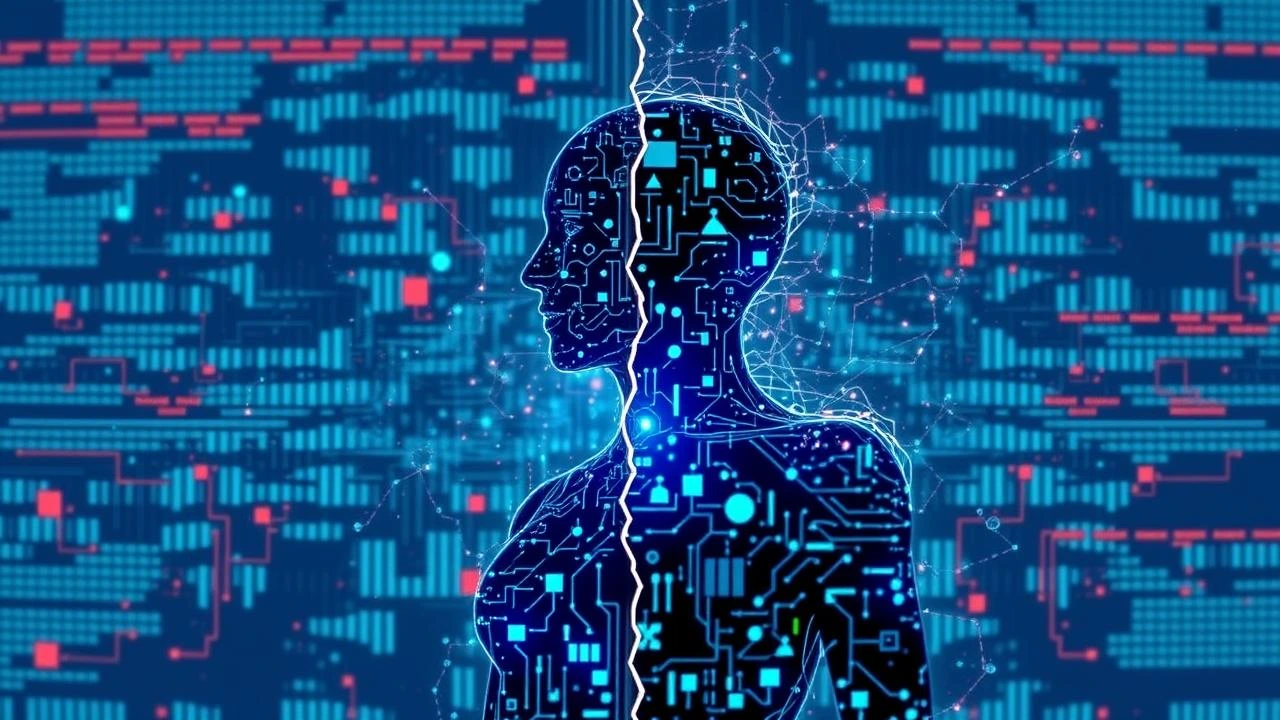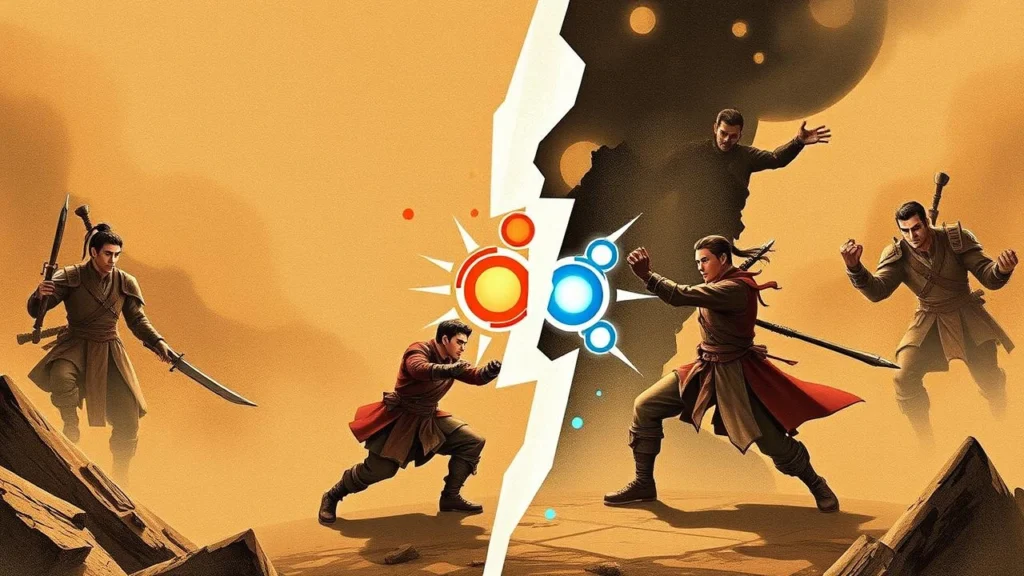Introduction
The boundaries between human creativity and machine-generated content have been blurred by the rapid advancements in artificial intelligence (AI). The recent court verdict on AI training has raised important questions about the extent to which AI can be considered creative and the implications for US copyright law. In this article, we will explore the differences between generative and creative content, the court case involving Anthropic, and the potential impact on the future of AI and copyright law.
Generative vs. Creative
Generative Content
Generative content refers to the output produced by AI algorithms based on the input data and training models. These algorithms can generate text, images, music, and other forms of content that mimic human creativity. Generative AI is designed to learn from large datasets, identify patterns, and produce new content based on those patterns.
However, the output produced by generative AI is not truly creative, as it is limited by the data and training models used. While generative AI can produce impressive and sometimes even surprising results, it does not have the ability to innovate or generate entirely new ideas.
Creative Content
Creative content, on the other hand, is the result of human imagination, intuition, and skill. It is characterized by originality, novelty, and the ability to evoke emotions and ideas. Creative content is not limited by data or training models and can be inspired by a wide range of sources, including personal experiences, cultural influences, and social contexts.
While AI can assist in the creative process by generating ideas, suggestions, and drafts, it is ultimately the human artist, writer, or musician who brings the creative spark and transforms the raw material into a finished work of art.
The Anthropic Case
The recent court verdict involving Anthropic, a startup focused on AI research and development, has shed light on the complex legal issues surrounding AI training and copyright law. The case involved Anthropic using a dataset of copyrighted materials, including books, articles, and websites, to train its AI models.
The lawsuit was filed by a group of authors and publishers who argued that Anthropic’s use of their copyrighted works without permission constituted copyright infringement. The court ruled in favor of Anthropic, stating that the company’s use of the copyrighted materials was protected under the fair use doctrine, which allows limited use of copyrighted works for purposes such as research, education, and criticism.
Implications for US Copyright Law
The Anthropic case has exposed a potential loophole in US copyright law, which may not adequately address the unique challenges posed by AI training. The fair use doctrine, which is intended to balance the rights of copyright owners with the public interest, may not be sufficient to protect the rights of creators whose works are used to train AI models.
One concern is that the use of copyrighted materials for AI training could lead to a loss of control over the creative process and a potential devaluation of human creativity. As AI becomes increasingly sophisticated, there is a risk that machine-generated content could become indistinguishable from human-generated content, making it difficult for consumers and creators to differentiate between the two.
Another concern is that the use of copyrighted materials for AI training could undermine the incentives for creators to produce new and original works. If AI-generated content becomes widespread and easily accessible, it could reduce the demand for human-generated content and limit the opportunities for creators to earn a living from their work.
The Future of AI and Copyright Law
The Anthropic case highlights the need for a nuanced and forward-looking approach to copyright law in the age of AI. As AI continues to evolve and become more integrated into our lives, it is essential that we develop a legal framework that protects the rights of creators while also recognizing the potential benefits of AI-generated content.
One possible solution is to establish clear guidelines for the use of copyrighted materials in AI training, including requirements for obtaining permission from copyright owners and providing appropriate attribution. Another approach is to explore new licensing models that allow creators to monetize their works while also enabling the use of their materials for AI training.
Ultimately, the key to striking the right balance between AI and copyright law will be to recognize the unique contributions of both human creators and AI-generated content. By fostering a culture of collaboration and innovation, we can harness the power of AI to enhance human creativity and drive progress in a wide range of fields.
FAQs
Q1. Can AI be considered creative?
A1. While AI can generate content that mimics human creativity, it does not have the ability to innovate or generate entirely new ideas. AI-generated content is limited by the data and training models used and cannot be considered truly creative.
Q2. Is the use of copyrighted materials for AI training considered copyright infringement?
A2. The recent court verdict involving Anthropic found that the use of copyrighted materials for AI training was protected under the fair use doctrine. However, the case has exposed a potential loophole in US copyright law, which may not adequately address the unique challenges posed by AI training.
Q3. What are the potential implications of AI-generated content on human creativity?
A3. There is a risk that machine-generated content could become indistinguishable from human-generated content, making it difficult for consumers and creators to differentiate between the two. This could lead to a loss of control over the creative process and a potential devaluation of human creativity.
Q4. How can we strike the right balance between AI and copyright law?
A4. By establishing clear guidelines for the use of copyrighted materials in AI training, exploring new licensing models, and fostering a culture of collaboration and innovation, we can harness the power of AI to enhance human creativity and drive progress in a wide range of fields.
Q5. Will AI eventually replace human creativity?
A5. While AI can assist in the creative process by generating ideas, suggestions, and drafts, it is ultimately the human artist, writer, or musician who brings the creative spark and transforms the raw material into a finished work of art. AI is not likely to replace human creativity but rather enhance it by providing new tools and techniques for expression.
Conclusion
The recent court verdict involving Anthropic has exposed a potential chink in US copyright law, highlighting the need for a nuanced and forward-looking approach to the legal issues surrounding AI training. As AI continues to evolve and become more integrated into our lives, it is essential that we develop a legal framework that protects the rights of creators while also recognizing the potential benefits of AI-generated content. By fostering a culture of collaboration and innovation, we can harness the power of AI to enhance human creativity and drive Generative vs. Creative: A court verdict on AI training has exposed an Anthropic-shaped chink in US copyright law

Introduction
The boundaries between human creativity and machine-generated content have been blurred by the rapid advancements in artificial intelligence (AI). The recent court verdict on AI training has raised important questions about the extent to which AI can be considered creative and the implications for US copyright law. In this article, we will explore the differences between generative and creative content, the court case involving Anthropic, and the potential impact on the future of AI and copyright law.
Generative vs. Creative
Generative Content
Generative content refers to the output produced by AI algorithms based on the input data and training models. These algorithms can generate text, images, music, and other forms of content that mimic human creativity. Generative AI is designed to learn from large datasets, identify patterns, and produce new content based on those patterns.
However, the output produced by generative AI is not truly creative, as it is limited by the data and training models used. While generative AI can produce impressive and sometimes even surprising results, it does not have the ability to innovate or generate entirely new ideas.
Creative Content
Creative content, on the other hand, is the result of human imagination, intuition, and skill. It is characterized by originality, novelty, and the ability to evoke emotions and ideas. Creative content is not limited by data or training models and can be inspired by a wide range of sources, including personal experiences, cultural influences, and social contexts.
While AI can assist in the creative process by generating ideas, suggestions, and drafts, it is ultimately the human artist, writer, or musician who brings the creative spark and transforms the raw material into a finished work of art.
The Anthropic Case
The recent court verdict involving Anthropic, a startup focused on AI research and development, has shed light on the complex legal issues surrounding AI training and copyright law. The case involved Anthropic using a dataset of copyrighted materials, including books, articles, and websites, to train its AI models.
The lawsuit was filed by a group of authors and publishers who argued that Anthropic’s use of their copyrighted works without permission constituted copyright infringement. The court ruled in favor of Anthropic, stating that the company’s use of the copyrighted materials was protected under the fair use doctrine, which allows limited use of copyrighted works for purposes such as research, education, and criticism.
Implications for US Copyright Law
The Anthropic case has exposed a potential loophole in US copyright law, which may not adequately address the unique challenges posed by AI training. The fair use doctrine, which is intended to balance the rights of copyright owners with the public interest, may not be sufficient to protect the rights of creators whose works are used to train AI models.
One concern is that the use of copyrighted materials for AI training could lead to a loss of control over the creative process and a potential devaluation of human creativity. As AI becomes increasingly sophisticated, there is a risk that machine-generated content could become indistinguishable from human-generated content, making it difficult for consumers and creators to differentiate between the two.
Another concern is that the use of copyrighted materials for AI training could undermine the incentives for creators to produce new and original works. If AI-generated content becomes widespread and easily accessible, it could reduce the demand for human-generated content and limit the opportunities for creators to earn a living from their work.
The Future of AI and Copyright Law
The Anthropic case highlights the need for a nuanced and forward-looking approach to copyright law in the age of AI. As AI continues to evolve and become more integrated into our lives, it is essential that we develop a legal framework that protects the rights of creators while also recognizing the potential benefits of AI-generated content.
One possible solution is to establish clear guidelines for the use of copyrighted materials in AI training, including requirements for obtaining permission from copyright owners and providing appropriate attribution. Another approach is to explore new licensing models that allow creators to monetize their works while also enabling the use of their materials for AI training.
Ultimately, the key to striking the right balance between AI and copyright law will be to recognize the unique contributions of both human creators and AI-generated content. By fostering a culture of collaboration and innovation, we can harness the power of AI to enhance human creativity and drive progress in a wide range of fields.
FAQs
Q1. Can AI be considered creative?
A1. While AI can generate content that mimics human creativity, it does not have the ability to innovate or generate entirely new ideas. AI-generated content is limited by the data and training models used and cannot be considered truly creative.
Q2. Is the use of copyrighted materials for AI training considered copyright infringement?
A2. The recent court verdict involving Anthropic found that the use of copyrighted materials for AI training was protected under the fair use doctrine. However, the case has exposed a potential loophole in US copyright law, which may not adequately address the unique challenges posed by AI training.
Q3. What are the potential implications of AI-generated content on human creativity?
A3. There is a risk that machine-generated content could become indistinguishable from human-generated content, making it difficult for consumers and creators to differentiate between the two. This could lead to a loss of control over the creative process and a potential devaluation of human creativity.
Q4. How can we strike the right balance between AI and copyright law?
A4. By establishing clear guidelines for the use of copyrighted materials in AI training, exploring new licensing models, and fostering a culture of collaboration and innovation, we can harness the power of AI to enhance human creativity and drive progress in a wide range of fields.
Q5. Will AI eventually replace human creativity?
A5. While AI can assist in the creative process by generating ideas, suggestions, and drafts, it is ultimately the human artist, writer, or musician who brings the creative spark and transforms the raw material into a finished work of art. AI is not likely to replace human creativity but rather enhance it by providing new tools and techniques for expression.
Conclusion
The recent court verdict involving Anthropic has exposed a potential chink in US copyright law, highlighting the need for a nuanced and forward-looking approach to the legal issues surrounding AI training. As AI continues to evolve and become more integrated into our lives, it is essential that we develop a legal framework that protects the rights of creators while also recognizing the potential benefits of AI-generated content. By fostering a culture of collaboration and innovation, we can harness the power of AI to enhance human creativity and drive progress in a wide range of fields.progress in a wide range of fields.






